Abstract
Beginning 10 hours after fertilization, zygotes of Fucus distichus L. Powell incorporate 35S into polysaccharides as a sulfate ester of fucose. These sulfated polysaccharides are sequestered in only the rhizoid cell of the two-celled embryo and can serve as a marker of cellular differentiation. Zygotes were pulsed at different times after fertilization with Na235SO4 to identify and isolate the fucans localized within the region of cytoplasm destined to become the rhizoid cell. Low molecular weight pools of 35S were saturated within 60 minutes, with the greatest incorporation into ethanol-soluble and insoluble fractions occurring with 0.1 mm Na2SO4 in the artificial sea water medium. At the time of rhizoid formation, four fucose-containing polysaccharide fractions incorporated 35S. When each fraction was subjected to diethylaminoethyl chromatography, two components were eluted with KCl that contained over 84% of the fucose and 93% of the 35S of the particular fraction. Highvoltage paper electrophoresis of each fraction also resulted in the separation of these two major components. Both components from each of the four fractions behaved identically when separated by diethylaminoethyl chromatography and paper electrophoresis. By comparing the incorporation of 35S into the polysaccharide fractions at 4 and 16 hours after fertilization, the fucan-sulfate components that are localized in the cytoplasm at the time of rhizoid formation were isolated. Although sulfated polysaccharides in brown algae are reported to be very heterogeneous in terms of their sugar composition and complexes with other heteropolymers, we propose that there are two major components that are sulfated during early embryogenesis in Fucus. The location of these two sulfated polysaccharides in different chemical fractions may reflect their subcellular localization (e.g., cytoplasmic vesicles or cell walls), or their association with other heteropolymers.
Full text
PDF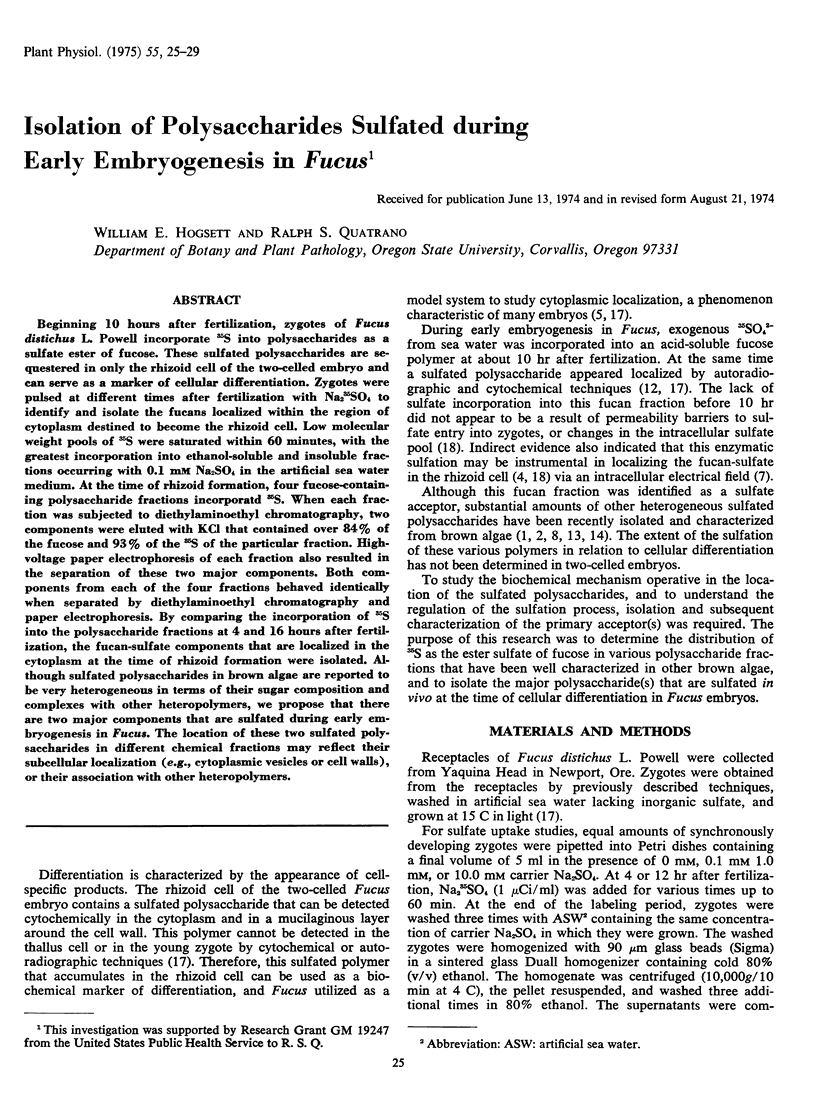
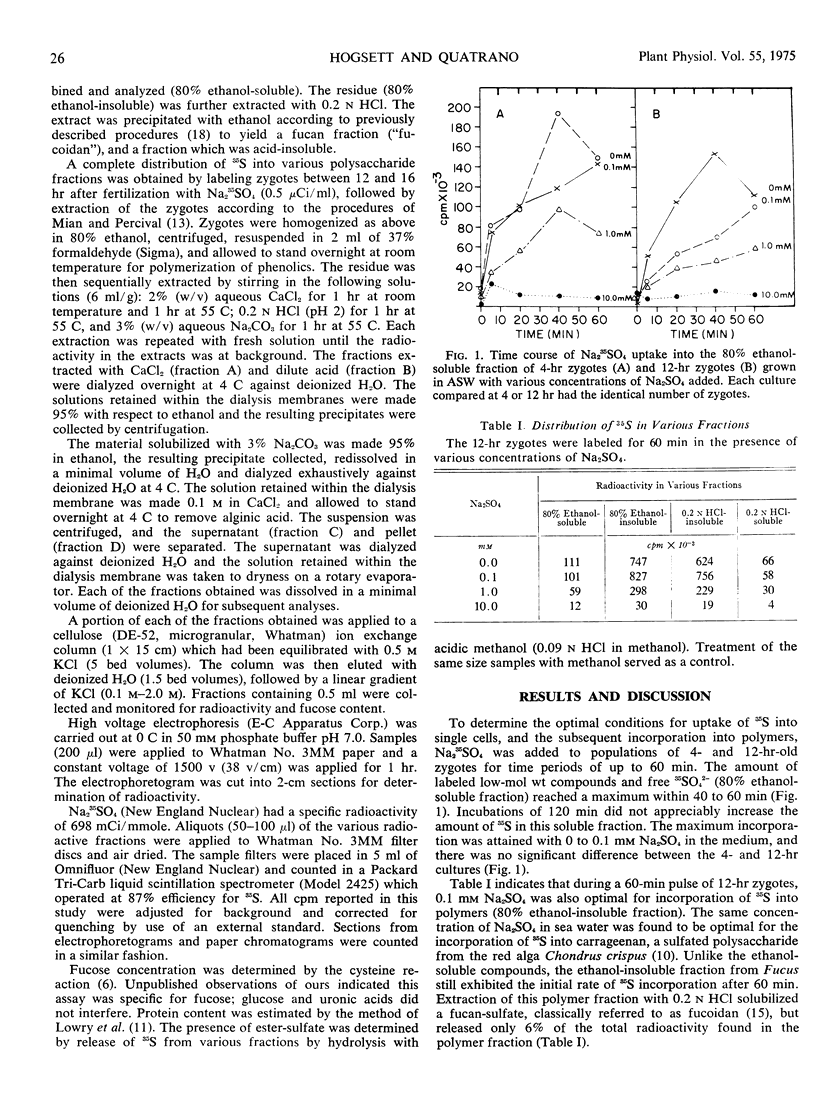
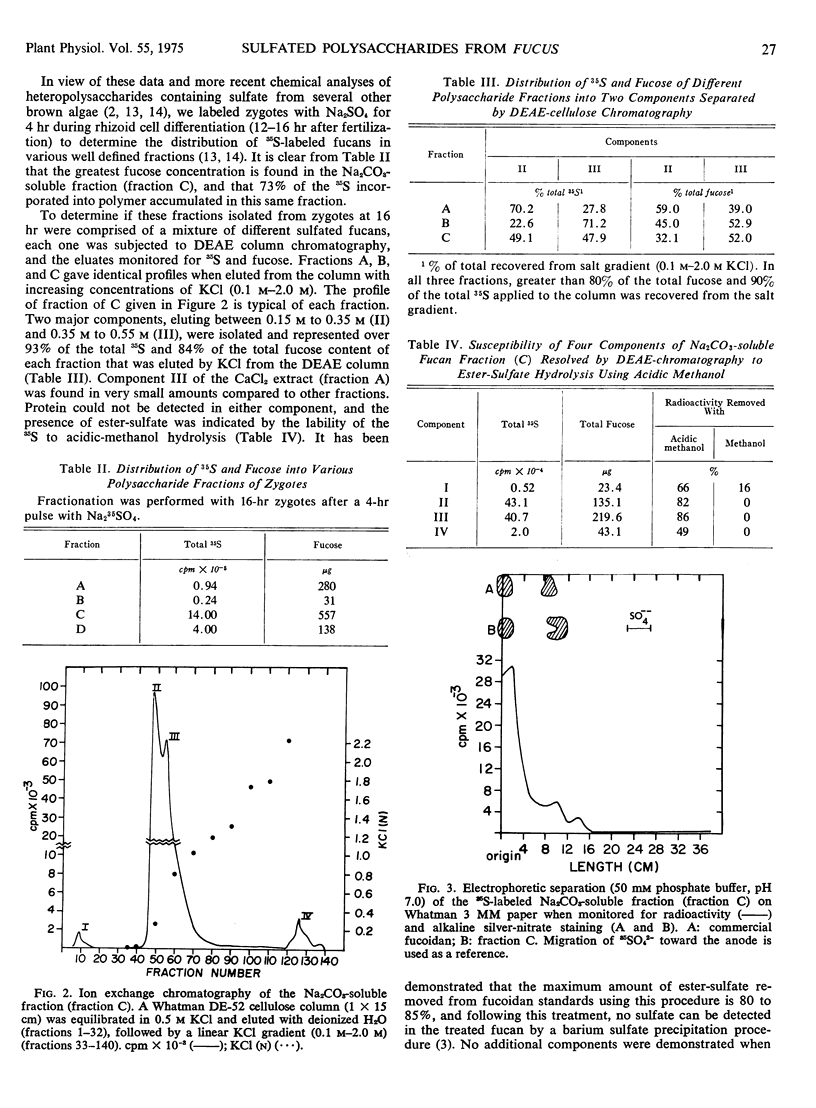
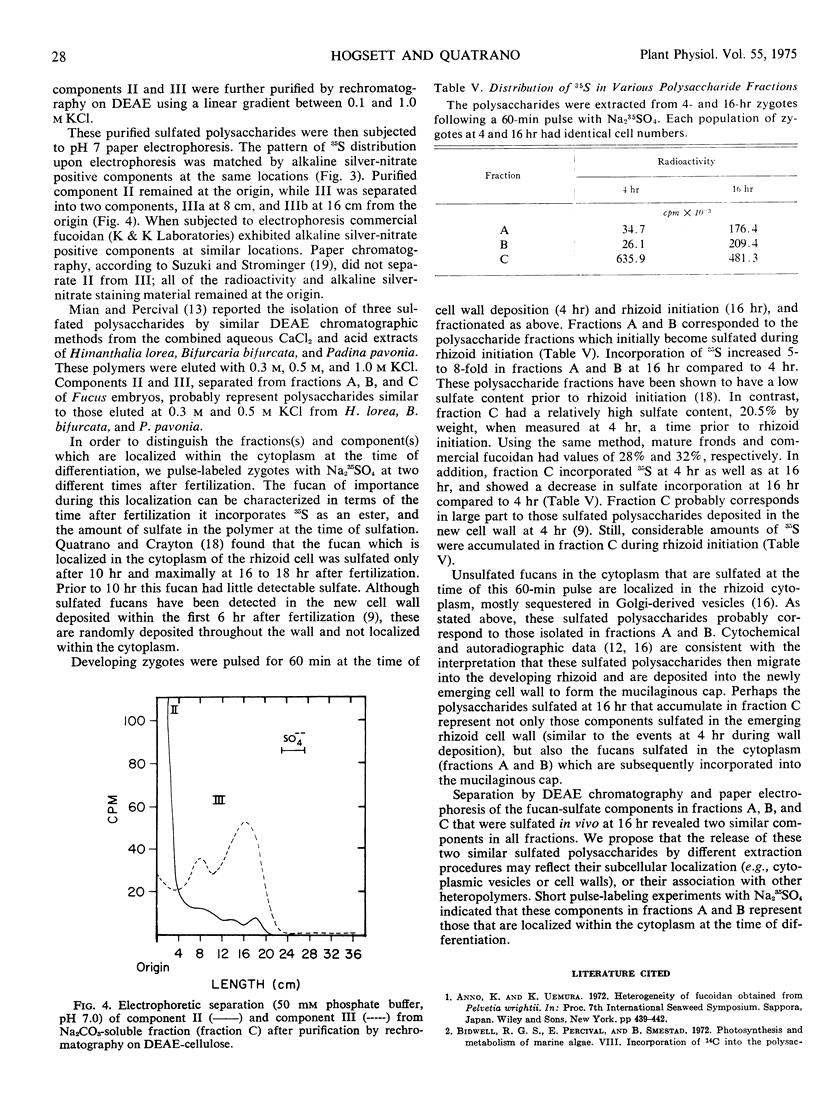
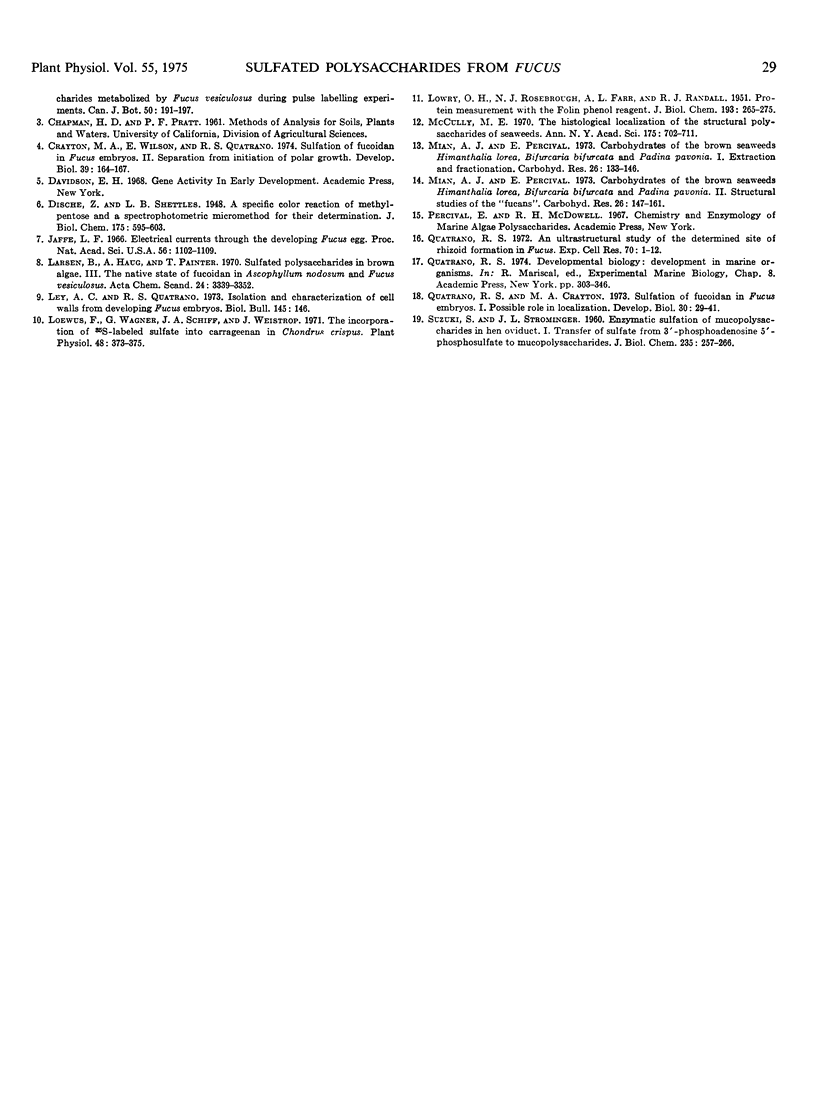
Selected References
These references are in PubMed. This may not be the complete list of references from this article.
- Crayton M. A., Wilson E., Quatrano R. S. Sulfation of fucoidan in Fucus embryos. II. Separation from initiation of polar growth. Dev Biol. 1974 Jul;39(1):164–167. doi: 10.1016/s0012-1606(74)80018-7. [DOI] [PubMed] [Google Scholar]
- Jaffe L. F. Electrical currents through the developing fucus egg. Proc Natl Acad Sci U S A. 1966 Oct;56(4):1102–1109. doi: 10.1073/pnas.56.4.1102. [DOI] [PMC free article] [PubMed] [Google Scholar]
- LOWRY O. H., ROSEBROUGH N. J., FARR A. L., RANDALL R. J. Protein measurement with the Folin phenol reagent. J Biol Chem. 1951 Nov;193(1):265–275. [PubMed] [Google Scholar]
- Larsen B., Haug A., Painter T. Sulphated polysaccharides in brown algae. 3. The native state of dfucoidan in Ascophyllum nodosum and Fucus vesiculosus. Acta Chem Scand. 1970;24(9):3339–3352. doi: 10.3891/acta.chem.scand.24-3339. [DOI] [PubMed] [Google Scholar]
- Loewus F., Wagner G. The Incorporation of S-Labeled Sulfate into Carrageenan in Chondrus crispus. Plant Physiol. 1971 Sep;48(3):373–375. doi: 10.1104/pp.48.3.373. [DOI] [PMC free article] [PubMed] [Google Scholar]
- Quatrano R. S. An ultrastructural study of the determined site of rhizoid formation in Fucus zygotes. Exp Cell Res. 1972 Jan;70(1):1–12. doi: 10.1016/0014-4827(72)90174-7. [DOI] [PubMed] [Google Scholar]
- Quatrano R. S., Crayton M. A. Sulfation of fucoidan in Fucus embryos. I. Possible role in localization. Dev Biol. 1973 Jan;30(1):29–41. doi: 10.1016/0012-1606(73)90045-6. [DOI] [PubMed] [Google Scholar]
- SUZUKI S., STROMINGER J. L. Enzymatic sulfation of mucopolysaccharides in hen oviduct. I. Transfer of sulfate from 3'-phosphoadenosine 5'-phosphosulfate to mucopolysaccharides. J Biol Chem. 1960 Feb;235:257–266. [PubMed] [Google Scholar]


